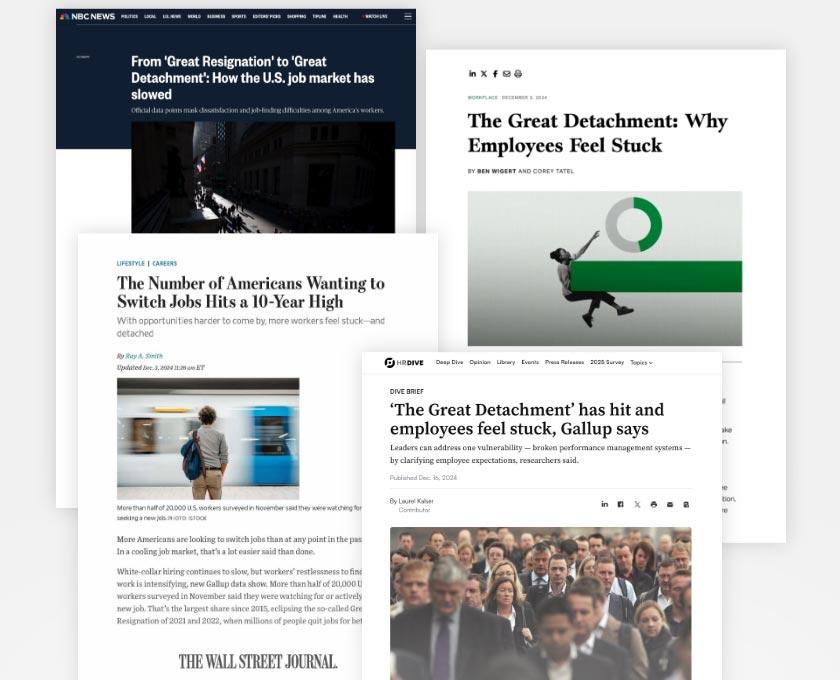Find What's Exceptional in Your Workplace
Your leaders have a profound impact on your company's culture, performance and resilience.
And yet, it's still the norm for organizations to use a subjective and often biased approach to selecting and developing them.
Gallup's Leadership Practice equips you to use a scientific approach -- based on more than 50 years of studying leadership behavior -- to put leaders in place who positively influence constituencies and make decisions that sustain your company through market disruptions.
Thriving Workplaces Are Our Business
Whether in person or virtually, millions of employees show up for work every day, and their workplace either improves the way they experience work and life -- or it doesn't.
In our vast experience, the most exceptional workplaces with the best performance outcomes use a strategic, multifaceted approach that includes these three elements:

getting their organization's unique, authentic culture right

supporting managers and leaders to create high-performing, development-focused, strengths-based teams

putting employee engagement at the center of everything they do, which drives positive outcomes for the individual, the organization and the customer
How are you investing in your people?
We can help shine a light on what makes your organization great and turn that into a true brand differentiator and employee value proposition, allowing your people to achieve better business outcomes.

Solutions That Work, No Matter the Disruption
Quiet quitting. The Great Resignation. The massive shift to remote work … and then the shift back. Amid all of these workplace disruptions, our solutions haven't changed. Because they work.
When the next disruption arrives -- and there will be a next one -- we'll have the tools leaders need to mitigate it. It's our business to know the workplace.
What Can Gallup's Science Do for Your Workplace?
We know what matters most to employees and customers at work and in life because we ask -- and then we ask again.
For over 80 years, Gallup has collected and analyzed data about workplaces and the employees who experience them. Our experts generate insights leaders can use to apply science-backed best practices and take action to boost performance outcomes.
That's how we know that an engaged workforce will generate the best business outcomes in terms of employee performance and customer experience.
It's also how we know the best questions to ask to measure your employees' engagement and how to develop action plans to ensure improvement over time.

Our commitment to understanding the will of the world and then disseminating that knowledge drives everything we do.
We're tracking progress on what matters most in workplaces and to societies at large with our global indicators -- updated quarterly to keep leaders up to speed on evolving perspectives. And in the world's largest ongoing study of the employee experience, we bring the voice of the employee to leaders with our annual State of the Global Workplace report.
We share these insights to equip and empower leaders to make purposeful, informed decisions and accomplish better outcomes.
Your Workplace Should Empower People to Meet Their Potential
We help exceptional workplaces get these three crucial elements of a successful workplace right.

Employee Engagement
Ask the right questions to assess and ultimately improve employee engagement, which ties directly to beneficial business outcomes.
Learn More
Leadership
Use a scientific approach to select and develop leaders who will positively impact your organizational culture.
Learn More
